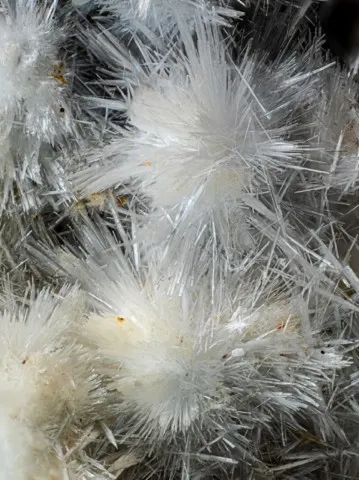MORAESITE
Class : Phosphates, arsenates, vanadates
Subclass : Hydrated phosphates
Crystal system : Monoclinic
Chemistry : Be2(PO4)(OH) 4H2O
Rarity : Very rare
An extremely rare beryllium mineral, moraesite is a secondary hydrated phosphate which forms in the final stages of crystallization of granitic pegmatites, where it very often coexists with beryl, frondelite and triphyllite. It was named in honor of Luciano Jaques Moraes, Brazilian mineralogist and geologist. Moraesite is a white mineral which usually forms acicular or fibrous crystals, exceptionally measuring 5 mm, often united in spherolitic aggregates reminiscent of okenite; it can also form geodic or felt encrustations.
Main photo : Moraesite de Pomarolli farm, Linópolis, Minas Gerais, Brazil © Gianfranco Ciccolini
Moraesite in the World
Twinning
No twin known for this mineral species.
Fakes and treatments
No fakes recorded for this mineral species.
Hardness : Undetermined
Density : 1.81
Fracture : Undetermined
Streak : White
TP : Translucent
RI : 1.462 to 1.490
Birefringence : 0.028
Optical character : Biaxial -
Pleochroism : None
Fluorescence : None
Solubility : Acids
Magnetism : NoneRadioactivity : None

